How Sciatica is related to the shoulder!
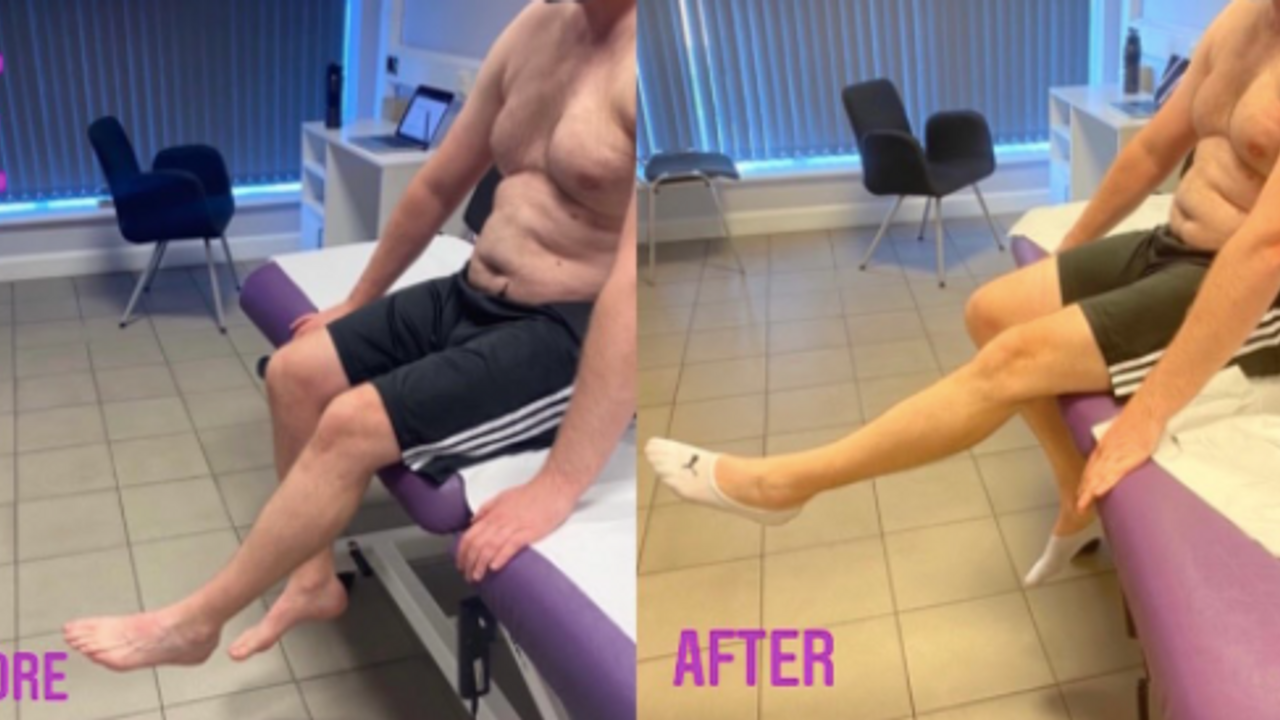
How Sciatica is related to the shoulder!
Tommy Conway, Chartered Physiotherapist and Director at OneHEALTH, Physiotherapy Clinic Tullamore.
Struggling with pain on one side, sometimes it’s in your right ankle, next day it’s your right neck and shoulder and then worse again is when it triggers your sciatica. You keep asking your friends, family, GP and physio “Why is it always on my right side?”, “If it’s not my right ankle it’s my right neck”. The big question you want the answer to is “Are they related?” my answer to you is, yes of course they are and I am going to show you examples of how a shoulder and a sciatica issue are related.
Case Study
- Mid 30’s Male with 2 years ongoing sciatic pain on the left side.
- Unable to stand for more than 30 mins.
- Unable to walk for 20 mins.
- Cannot exercise without increase in symptoms travelling down his left leg.
- Cannot tie his shoelaces in the morning.
- Cannot bend forward to brush his teeth without pain down the leg.
- Taking 2 - 4 painkillers daily to help him sleep.
- Taking a career break to try and solve this injury.
- Does not want surgery.
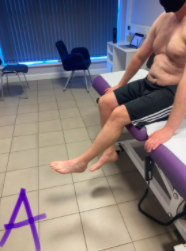
In the picture attached A, this client is performing a slump test. This is a test to examine the clients ability to stretch the sciatic nerve. You can see that he is very limited and unable to fully straighten his knee on the left. This would correlate to swinging of the left leg when walking, see picture B. Notice how the left leg swings forward as the left arm swings back.
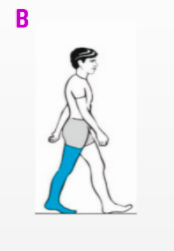
Now let’s look at his static posture in picture C. You can see his right shoulder blade is further away from his spine than his left shoulder blade. This would indicate to me that the muscles on his left shoulder are restricting him turning his upper back to the left hand side.This restriction would stop him swinging his left arm back, which will also stop him swinging his left leg forward.
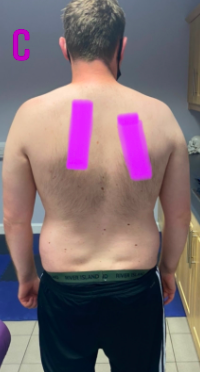
In the next few sessions we focused our treatment not on the lower back and sciatic nerve but the middle back and inside of the left shoulder blade. You can see the redness on the muscles after the treatment I performed in picture D.
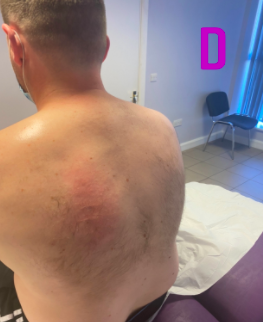
This treatment allowed more freedom for the left shoulder to move and in a couple of weeks we had massive changes to the slump test, see picture E, a before and after of his slump test.

I am glad to say he was able to help this client resolve all of the issues listed in the bullet points above, it took time but we got there. Understanding how the body is connected is essential in helping clients with long term pain. It can be difficult at times to have pain all on one side of the body, you get frustrated not knowing where to start or even understanding how they are connected. Hopefully this piece will give you a small insight into how the body is connected and help you understand “why it is always on one side”
Hope this helps, any questions contact me personally on [email protected] and thanks for reading.


